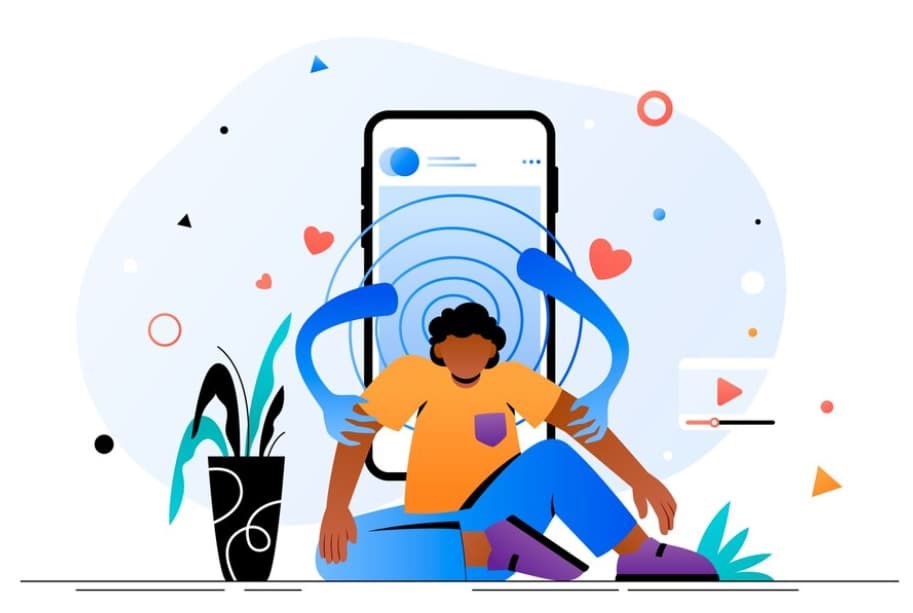In an era where digital devices permeate every aspect of our lives, the concept of a digital detox has become increasingly relevant. A digital detox refers to a period of time during which an individual abstains from using electronic devices such as smartphones, computers, and tablets, with the goal of reducing stress and increasing personal interaction in the physical world. As we delve deeper into the digital age, the need to disconnect and experience the world away from screens has never been more pronounced.
Signs You Might Need a Digital Detox
Many of us are unaware of the signs indicating that it’s time for a digital detox. Symptoms can range from physical discomfort, such as strained eyes and sleep disturbances, to psychological effects, including heightened anxiety, decreased attention span, and a pervasive sense of being overwhelmed by digital information. Recognizing these signs is the first step towards acknowledging the need for a break from digital devices.
Benefits of a Digital Detox
Engaging in a digital detox can have a wide range of positive impacts on an individual’s well-being. Here’s a clearer explanation of these benefits:
- Enhanced Mental Well-being: Many people who take a break from digital devices and social media experience a notable improvement in their mental health. This break can lead to lower levels of stress and anxiety, as it reduces the constant influx of information and social comparisons that are prevalent in digital spaces.
- Physical Health Improvements: Stepping away from screens not only helps in adopting a better posture by reducing the time spent hunched over devices but also contributes to improved sleep quality. The blue light emitted by screens can interfere with sleep patterns, so reducing screen time, especially before bed, can lead to more restful sleep.
- Strengthened Social Connections: By limiting digital interactions, individuals often find more time and energy to engage in face-to-face interactions, leading to deeper and more meaningful relationships. This face-to-face engagement is critical for building strong social bonds and experiencing empathy and emotional connection with others.
- Rediscovery of Non-Digital Activities: A digital detox provides an opportunity to explore and engage in hobbies and interests that don’t involve screens. This can lead to the discovery or rediscovery of activities that bring joy and relaxation in a more tactile and engaging way, helping individuals to appreciate the richness of experiences that the non-digital world has to offer.
Overall, taking a break from digital devices and platforms can help individuals reset their relationship with technology, leading to a more balanced and fulfilling life.
Implementing Nonpharmacologic Revitalisation Methods
A digital detox can be considered one of the nonpharmacologic revitalisation methods, providing a drug-free approach to improving one’s health and well-being. By stepping away from digital devices, individuals allow their minds and bodies to reset, reducing reliance on digital stimulation and promoting natural methods of relaxation and rejuvenation.
Strategies for a Successful Digital Detox
To make a digital detox work effectively, it involves more than just the intention to use digital devices less. Here’s a refined explanation of strategies to ensure a successful digital detox:
- Plan with Clear, Achievable Goals: Start by defining specific, realistic objectives for your digital detox. This could mean setting aside certain hours of the day as tech-free times or selecting entire days where you go without digital devices. Such structured goals help in making the detox feel more manageable and less daunting.
- Find Enjoyable Alternatives: The key to reducing screen time is not just about removing digital devices from your routine, but also about filling that time with rewarding and enjoyable activities. This could involve physical activities like hiking or playing sports, immersing yourself in books, or dedicating time to nurturing relationships with family and friends in person. These alternatives not only distract from digital usage but also enhance your quality of life.
- Build a Support System: Share your digital detox plans with those around you. By letting your friends and family know about your intentions, you create an environment where there’s less pressure to be constantly connected, and you might even inspire others to join you. Their understanding and support can significantly reduce the temptation to revert to digital habits and can provide encouragement throughout the detox process.
Challenges and Considerations
Despite the benefits, a digital detox is not without its challenges. Withdrawal symptoms, such as anxiety and a sense of missing out, can make the process difficult. Moreover, the pervasive nature of digital technology in professional settings may pose practical challenges. However, by gradually reducing screen time and setting realistic boundaries, these obstacles can be overcome.
Conclusion
In conclusion, a digital detox offers a myriad of benefits by allowing individuals to disconnect from digital devices and reconnect with the world around them. By recognizing the signs of digital overload and implementing strategic measures to reduce screen time, anyone can experience the revitalizing effects of a digital detox. We encourage readers to consider their digital habits and take steps towards incorporating nonpharmacologic revitalisation methods into their lives for improved mental, physical, and social well-being.
